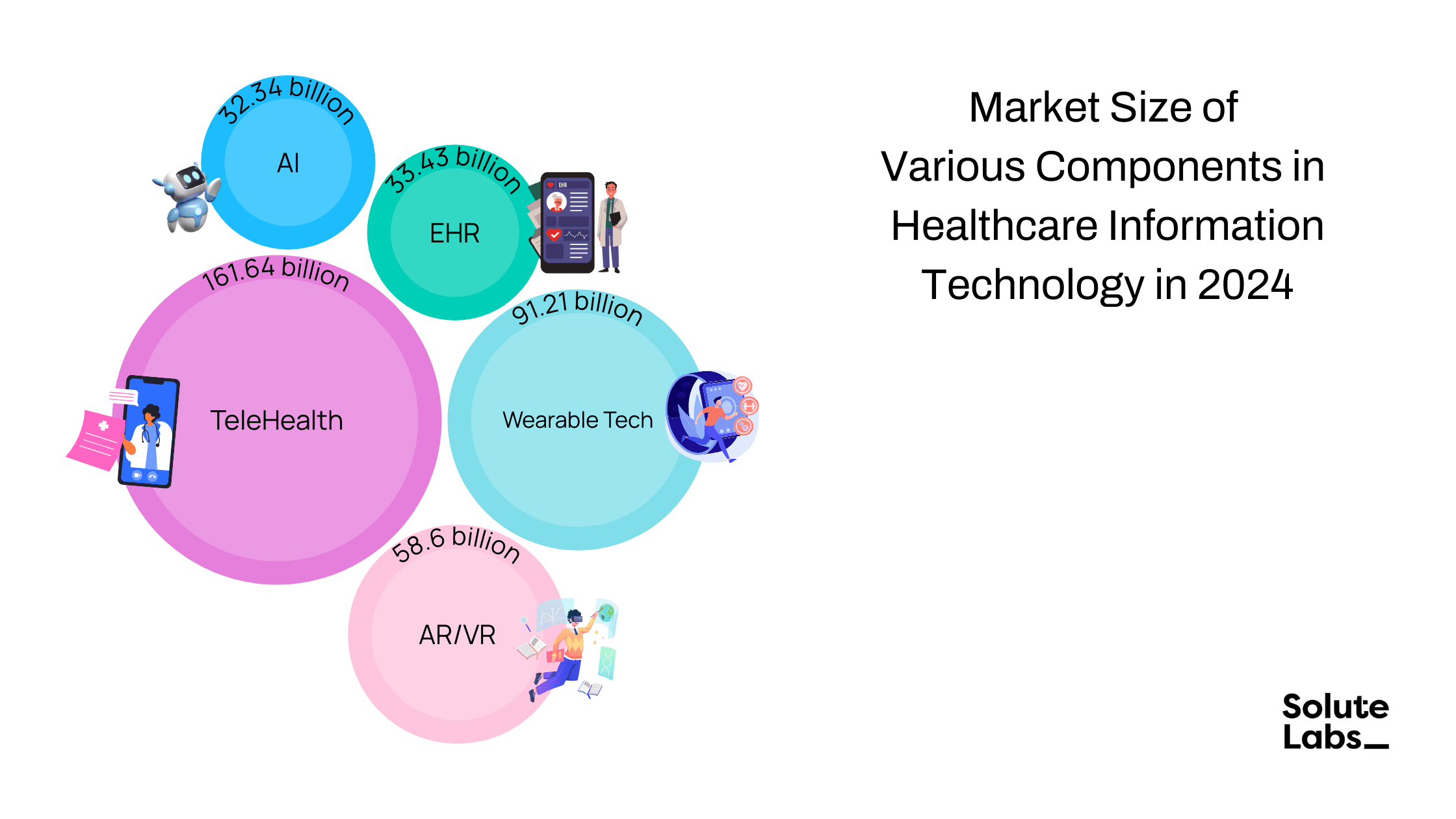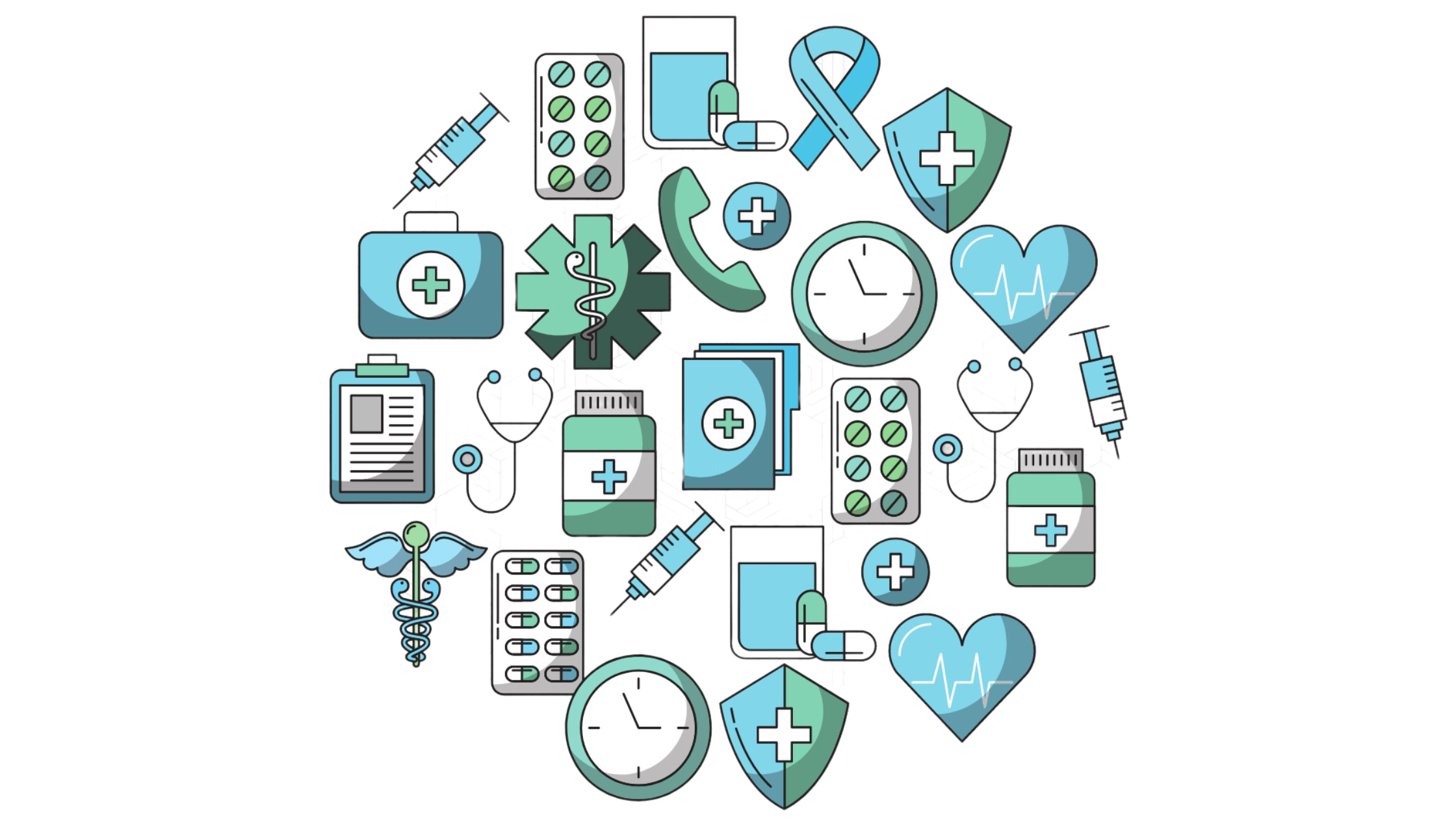The IT industry has conquered all major markets, including healthcare. According to MarketsandMarkets, the global healthcare IT market is expected to reach $974.5 billion by 2027. Integrating technology with health has helped doctors and researchers improve customer safety, via real-time tracking, accurate reporting, and adherence to security guidelines.
Healthcare pioneers also recommend using information technology in handling daily patient information to reduce unforeseen errors. A study conducted by the American Institute of Medicine (IOM) states that 98,000 deaths happen every year due to human mishandling of information.
When hospitals adopt the latest technologies, they automate tasks and leverage artificial intelligence to get better treatment, and healthcare providers aren't overwhelmed with tasks.
This article will dive into understanding how Health Information Technology plays a role in developing patients' health and wellness.
What is Healthcare Information Technology (HIT)?
Healthcare Information Technology (HIT) is applying health technology or information technology to health care. It is a process of designing, developing, or maintaining information systems for the healthcare sector.
Today, the results of IT healthcare providers draw prompt and accurate conclusions that are revolutionizing the way patients are treated. Back in 2004, President George W. Bush created ONC for HIT (Office of the National Coordinator for Health Information Technology), which became the impetus for using IT in healthcare.
In 2009, Health Information Technology for Economic and Clinical Health (HITECH) was passed to provide funding of $35 billion to eligible hospitals and professionals if they would make use of certified EHR technology (CEHRT). This basically means that it involves using Electronic Health Records for e-prescription, storing data for patients, and acting as a single source of true information to health providers.
Importance of Healthcare Information Technology
HIT offers plenty of benefits to healthcare providers and researchers looking to automate tedious tasks. Not just this, it also enhances communication between doctors to provide prompt medical care to their patients.
The use of technology in healthcare reduces any unforeseen errors and accelerates the discovery of medicines. Previously, researchers had to handle considerable data to derive information, which was neither efficient nor scalable.
Health IT focuses on developing patient's health, not the hassle of managing healthcare systems :
Reduced paperwork
When health professionals opt for digital patient records, it reduces unnecessary paperwork. The patients don't have to fill in the same information again; their digital form acts as a single source of information.
Faster & Accurate prescriptions
E-prescription is the fastest way to get your medicines. The system automatically sends prescription orders to the pharmacy, so you just go and pick up your medicine, saving you a lot of time. E-prescription also reduces unforeseen errors made through messy handwriting on paper.
Better patient follow-up
HIT makes the follow-up process for patients simpler. Doctors can add the next date to visit the hospital and check it themselves. It stores the feedback of previous follow-ups, so doctors are well in sync with the patient's conditions.
Secure access to information
Many times, when patients travel or shift permanently to other places, they are forced to carry bundles of paperwork and prescriptions, which becomes quite a hassle. However, adopting technology in health makes everything digital, and patients can access their prescription and follow-up details anytime.
Suggested Read
10 Healthcare Business Ideas for Startups.
View Blog
Ways Technology is Transforming the Healthcare System
1. Artificial Intelligence
Artificial intelligence is now heavily used in the healthcare industry to help doctors get accurate results from the heaps of data available. The AI uses an algorithm that makes this process simpler and faster. The AI system extracts data from a large patient population and provides health risk alerts and other disease predictions by utilizing machine learning and predictive analytics.

2. Augmented Reality
Augmented Reality is the future of healthcare. AR allows users to project digital information into the real world. Healthcare providers utilize AR to get more in-depth information on a patient's symptoms. It also helps surgeons during surgeries by integrating digital images into the microscope of the surgical device.
More health professionals are now adopting the latest HIT systems to give their patients an exclusive experience. The technology improves customer safety with accurate predictions and advanced health monitoring.
3. Electronic Health Records
Prior, health professionals used antique paper-filing systems to handle patients' records, making it challenging for them to offer prompt care. With Electronic Health Records (EHR), maintaining patient information has become a breeze. The EHR system allows caregivers to access updated information and reduces the chances of errors.
EHR contributes to big-picture improvements in a way that it helps internet X-ray or test reports and state information that a doctor's naked eye might miss. Lastly, they are excellent for the environment and save millions of trees from being cut. EHRs are readily accessible, compact, and super-safe for the environment.
4. Wearable Technology
Another way in which people have real-time access to their health status is through wearables. The latest wearable technology is integrated with smart sensors that track our movements every second and sync with your smartphone. Most people use them to measure their heart rates, O2 levels, stress levels, calories burned, etc.
Wearables offer users the latest personalized information via smartwatches, fitness trackers, and sports watches. These help users achieve their fitness goals and pre-inform them of an unnatural fall or raised blood or oxygen levels. Wearables are preferred even for healthy people to remain that way and prevent any chronic diseases.
5. TeleHealth
The pandemic has taught us that we can do everything sitting at home, including speaking to our doctors. Healthcare professionals have especially asked people to seek telehealth facilities to avoid the rush at hospitals. Telehealth refers to digital communication via mobile devices or computers to access health services.
Here, you can book virtual appointments, talk to your doctor, and maintain health records. Statistically, 85% of people would recommend telemedicine services for the ease of remotely connecting with their doctors. Based on the information updated on the app, healthcare providers can remotely monitor the health of their patients and prescribe them medicines virtually.
SoluteLabs: Your Partner in Healthcare Transformation
SoluteLabs offers healthcare development services that help both, patients and healthcare providers. Explore how we collaborated with alldayDr to conceptualize and build their entire product suite from scratch!






